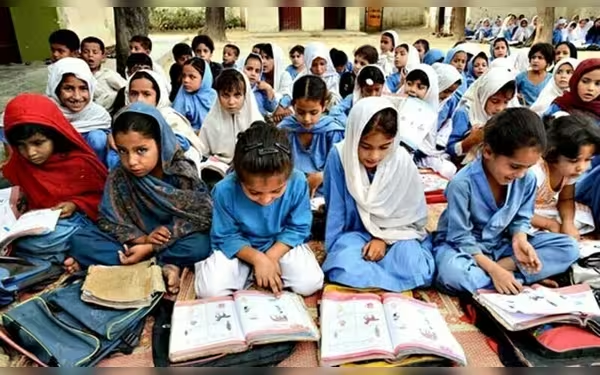Thursday, November 7, 2024 03:34 AM
26% Out-of-School Children in 45 Tehsils: Urgent Action Needed
- 26% of out-of-school children in 45 tehsils.
- 91.62% of children in Kot Mandal not attending school.
- Government plans to address educational crisis.
 Image Credits: dawn
Image Credits: dawnA report reveals 26% of out-of-school children in 45 tehsils, highlighting urgent need for government intervention in Pakistan's education system.
In Pakistan, the issue of out-of-school children has reached alarming levels, with a recent study revealing that a staggering 26% of these children are concentrated in just 45 tehsils across the country. This situation poses a significant challenge to the nation’s educational landscape, as millions of children remain outside the formal education system. The report, conducted by the Pakistan Alliance for Maths and Science, highlights the urgent need for government intervention at the tehsil level to address this pressing issue.
The study indicates that there are approximately 25.3 million children aged between five and sixteen who are not enrolled in school. Of these, 79% have never attended school, while 21% have dropped out at various stages. Alarmingly, the highest proportion of children who have never been to school falls within the age group of 5 to 9 years, which raises serious concerns about the future literacy rates in Pakistan.
Labelled ‘The Missing Third of Pakistan,’ the report is based on the 2023 census and provides a detailed analysis of the educational situation at the tehsil level. It identifies the top ten and bottom ten tehsils in terms of the number of out-of-school children. Among the most concerning findings, Kot Mandal in Sibi stands out with an astonishing 91.62% of its children not attending school. Other tehsils such as Tol Khulla in South Waziristan and Sanni in Kacchi also report high percentages of out-of-school children, with figures reaching 90.8% and 89.1%, respectively.
Education Secretary Mohyuddin Ahmad Wani has acknowledged the findings of this report, stating that the federal government is already taking steps to tackle the issue. He emphasized that the report's findings will be presented to the Education Task Force to establish new targets aimed at reducing the number of out-of-school children. Wani assured that both the federal government and provincial authorities are aligned in their efforts to resolve this critical issue.
The report also sheds light on the stark contrast between the lagging tehsils and those performing well in terms of school enrollment. For instance, tehsils like Rawalpindi, Jehlum, and Abbottabad have emerged as top performers, with significantly lower percentages of out-of-school children. In Rawalpindi, tehsils such as Kahuta and Kotli Sattian report figures below 10%, showcasing the effectiveness of local educational initiatives.
As the government and policymakers focus on addressing the educational crisis, it is crucial to recognize that the future of Pakistan hinges on the education of its youth. By prioritizing the needs of the most affected tehsils and implementing targeted strategies, there is hope for a brighter future where every child has the opportunity to receive an education. The findings of this report serve as a wake-up call, urging all stakeholders to take immediate action to ensure that no child is left behind in the pursuit of knowledge.













